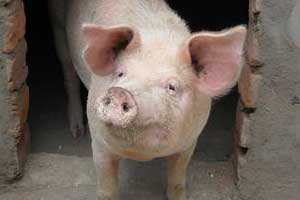Market acceptation biggest obstacle for castration ban

Market acceptation is the biggest obstacle for achieving the goal of completely banning castration of male piglets in the European Union by 2018.
This was the key outcome of a conference related to a ban on castration in the Netherlands, late last week, reports Dutch agricultural magazine Boerderij.
The Netherlands decided to move away from castration in 2007 and aims to put a complete stop to castrating in 2015. Since the Netherlands are 268% self-sufficient, a lot of export markets also would have to comply with the non-castration to achieve this goal.
For this reason, a few years ago, Europe-wide the year 2018 was agreed for a stop of castration – called ‘Boars heading for 2018’. The recent conference showed that national attitude differences throughout Europe appear difficult to erase.
The UK is the best known example where castration is a thing of the past. In many countries, however, developments are slower than in the Netherlands.
- In Germany, research is being conducted but market acceptation is missing;
- In France, only cooperative Cooperl uses entire boars for its meat production;
- In Belgium, castration occurs using painkillers – and vaccination is being used as well;
- The Danish, usually leading in animal welfare discussions, are hesitant;
- In Poland and Italy, the topic is no point of discussion at all.
The delegates concluded that popular support for a stop of castration needs to grow. Everybody in the pig industry therefore would need mobilising to raise the attention for the issue.
Detection
To overcome public resistance against the use of boar meat, a fool-proof detection of off-smelling carcasses may help. This has come a little closer as about a month ago, a protocol for correct use of the human nose at the slaughter line was been approved. In Germany, this is part of the quality assurance QS system – in the Netherlands meatpackers can have their methods certified by Verin.
Raising boars
Adding to the credibility of boar raising was a recent successful trial with raising boars in the Netherlands. Main condition to keep boars with minimal mounting behaviour and aggression, was to reduce stress and other negative stimuli.
This can be achieved by sufficient feed, a good climate, sufficient amounts of amino acids in feed as well as clean floors.











